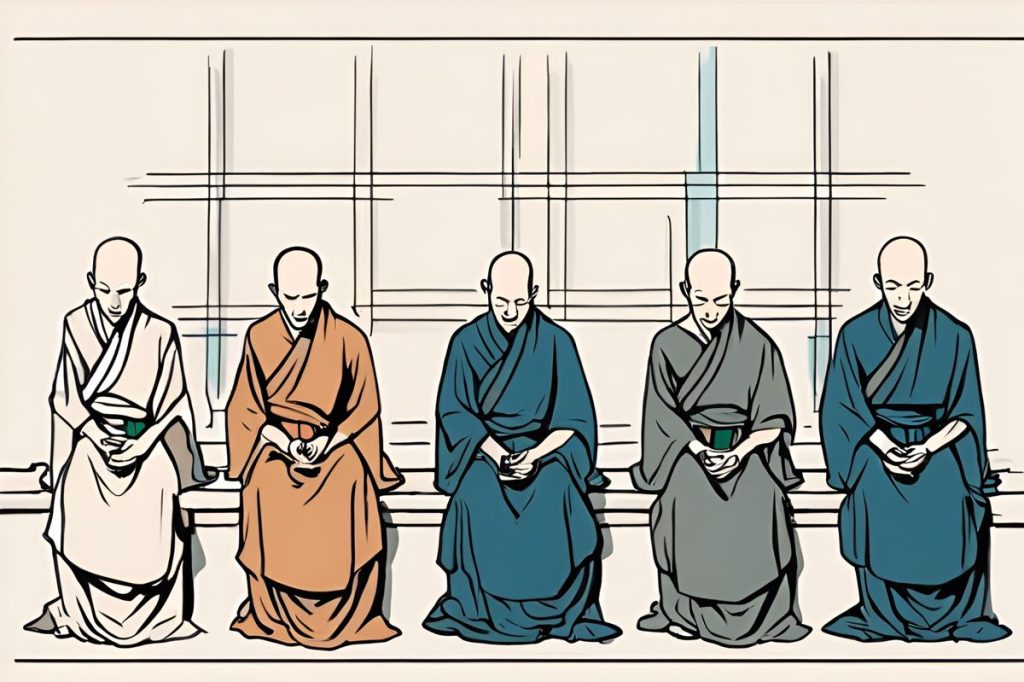The Avakoum Monastery’s approval by the Holy Synod has sparked controversy due to allegations of unethical conduct, illegal activities, and privacy law violations. Ongoing investigations by both ecclesiastical and civil authorities are underway to address potential financial misconduct, cases of violence, and sexual harassment within the monastery.
What is the controversy surrounding the approval of Avakoum Monastery?
The Avakoum Monastery gained approval from the Holy Synod amid controversy, including allegations of unethical conduct, illegal activities, and scandals involving privacy law violations. Additionally, the monastery faces scrutiny over potential financial misconduct and cases of violence and sexual harassment, with ongoing investigations by ecclesiastical and civil authorities.
Contested Beginnings
The journey of the Avakoum monastery has been fraught with contention since its conception. Bishop Isaias of Tamasos disclosed that despite objections from the late Archbishop Chrysostomos II, the monastery’s construction was given the go-ahead by the Holy Synod. Initially hesitant, Archbishop Chrysostomos II held reservations about the establishment of a hermitage—a precursor to the monastery. It wasn’t until Bishop Isaias extended an olive branch, inviting him to lay the founding stone, that the Archbishop began to consider the proposal.
A pivotal telephone discussion led to a meeting between Archbishop Chrysostomos II and the two priests, who would eventually be ensnared in scandal, alongside their Superior. By the conclusion of this meeting, the Archbishop’s concerns had been assuaged, paving the way for the hermitage’s transformation into a full-fledged monastery. On September 5, 2022, the Holy Synod, with the Archbishop’s consent, endorsed the monks’ plea to elevate the hermitage’s status and appoint Father Nektarios as the Abbot.
Scandal and Scrutiny
As the monastery came under the spotlight, several scandals simultaneously surfaced, prompting an ecclesiastical investigation. Allegations of unethical conduct, illegal activities, and potential criminal behavior cast a long shadow over the religious institution. Currently, the two implicated monks are bracing themselves to confront the accusations laid before them in an ecclesiastical court, following formal complaints by Isaias.
In a developing subplot, reports have emerged regarding the unauthorized installation of cameras within the monastery. While the monks admitted to being aware of the cameras, they claim initial settings were to capture video without audio—a measure to ensure privacy. However, allegations have surfaced insinuating that instructions were given to manipulate the recording system to capture sound, an act that would contravene privacy laws.
Legal Entanglements and Ecclesiastical Oversight
The monastery’s troubles only seem to deepen, with additional investigations underway. Two cases in particular have caught the attention of welfare police: one involving violence against a woman, and another concerning allegations of sexual harassment. In the case of the former, despite the Archmandrite Porfyrios and Abbot Nektarios appearing before investigators, the woman involved has elected not to press charges. This case, however, may still reach the courts, requiring the victim to testify.
In the second case, the alleged victim has chosen not to involve law enforcement directly but has instead appealed to the Holy Synod through written correspondence. This approach signifies the complexities involved when ecclesiastical and civil jurisdictions intersect. Moreover, the attorney-general’s office has appointed investigators to scrutinize potential financial misconduct linked to the monastery’s operations.
Ongoing Repercussions
As inquiries continue, the religious community and the public await the outcome, which could have far-reaching implications for the ecclesiastical establishment. The leaked information and internal strife have led to a tense atmosphere, with the Bishop of Tamasos staunchly defending the integrity of the monastery and decrying the leaks as disrespectful to the late Archbishop’s memory. The unfolding events pose significant questions about governance, accountability, and the balance of tradition and transparency within modern religious institutions.
What led to the approval of Avakoum Monastery by the Holy Synod amid controversy?
The approval of Avakoum Monastery by the Holy Synod was surrounded by allegations of unethical conduct, illegal activities, and privacy law violations. Despite objections from the late Archbishop Chrysostomos II, the monastery’s construction moved forward after an olive branch was extended by Bishop Isaias of Tamasos, leading to the Archbishop’s consent and endorsement by the Holy Synod.
What scandals have emerged regarding the Avakoum Monastery?
The Avakoum Monastery has faced allegations of unethical conduct, illegal activities, and potential criminal behavior. Scandals include claims of financial misconduct, violence against a woman, and allegations of sexual harassment within the religious institution. Additionally, reports of unauthorized installation of cameras within the monastery have raised concerns about privacy law violations.
How are legal entanglements and ecclesiastical oversight impacting the Avakoum Monastery?
The monastery is currently under investigation by welfare police for cases involving violence against a woman and allegations of sexual harassment. While ecclesiastical courts are set to address complaints against implicated monks, the involvement of civil authorities and the attorney-general’s office suggest a complex intersection of ecclesiastical and civil jurisdictions in investigating potential financial misconduct linked to the monastery’s operations.
What are the ongoing repercussions of the controversies surrounding Avakoum Monastery?
The unfolding events surrounding Avakoum Monastery have raised questions about governance, accountability, and the balance of tradition and transparency within modern religious institutions. The leaked information, internal strife, and the tense atmosphere within the religious community could have far-reaching implications for the ecclesiastical establishment. The outcome of the investigations will be awaited by both the religious community and the public.

